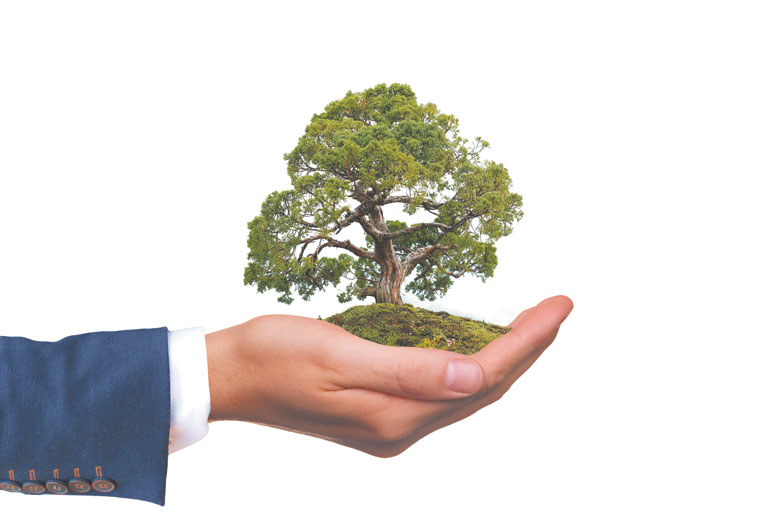Envisioning a net-zero future and what it will take to get there

With the United Nations Conference on Climate Change (COP26) recently concluded in November, the world at large has reaffirmed its ongoing commitment to address the climate crisis before it is too late, with world leaders, business executives, non-government organizations, and environmental groups taking the charge.
To adequately respond to the wide-reaching scope of the climate change problem, COP26 had countries pledge toward the pursuit of goals from environmental restoration, conservation, and protection; to net zero goals; reducing methane emissions; transitioning from fossil fuels, and more.
The Philippines has previously pledged to cut its greenhouse gas emissions to a 75% reduction by 2030. Corporations have followed suit, with business giants such as Meralco, and the SM Group of Companies among others announcing their sustainability commitments. The Ayala Corp. in particular has recently committed to achieving net zero greenhouse gases by 2050, in alignment with the goal of mitigating global warming.
Yet is this enough? In a recent report, the Intergovernmental Panel on Climate Change (IPCC) predicted that, should the world not drastically reduce its carbon emissions, it has a 50% chance of exceeding a 1.5°C temperature threshold within the next few decades — warming levels that endanger the lives of millions through extreme heatwaves, droughts, floods, and typhoons.
The Emissions Gap Report 2021 released by the UN Environment Programme showed that new national climate pledges combined with other mitigation measures put the world on track for a global temperature rise of 2.7°C by the end of the century, well above the 1.5°C goal.
“The clock is ticking loudly,” Inger Andersen, UN Environment Programme executive director, said in the report. “Nations must put in place the policies to meet their new commitments and start implementing them immediately. Then they must zero in on net zero, ensuring these long-term commitments are linked to the nationally determined contributions, and that action is brought forward. It is time to get the policies in place to back the raised ambitions and, again, start implementing them. This cannot happen in five years. Or in three years. This needs to start happening now.”
Another report by the International Energy Agency (IEA) found that climate pledges from governments so far will fall well short of what is needed.
The “Net Zero by 2050: a Roadmap for the Global Energy Sector” said that while the world has a viable pathway to building a global energy sector with net-zero emissions in 2050, but it is narrow and requires an unprecedented transformation of how energy is produced, transported and used globally.
“Climate pledges by governments to date — even if fully achieved — would fall well short of what is required to bring global energy-related carbon dioxide (CO2) emissions to net zero by 2050 and give the world an even chance of limiting the global temperature rise to 1.5°C,” the report said.
The global energy sector accounts for the lion’s share of the greenhouse gas emissions largely responsible for climate change, alongside agriculture, forestry and land use, and manufacturing.
The IEA report is the world’s first comprehensive study of how to transition to a net zero energy system by 2050 while ensuring stable and affordable energy supplies, providing universal energy access, and enabling robust economic growth.
The roadmap aims to illustrate this journey by setting out more than 400 milestones to achieving net zero by 2050. These include, from today, no investment in new fossil fuel supply projects, and no further final investment decisions for new unabated coal plants. By 2035, there are no sales of new internal combustion engine passenger cars, and by 2040, the global electricity sector has already reached net-zero emissions.
Innovation is a key part of the plan. While the roadmap shows that the available technologies today can put the world on the right path, to reach net zero emissions by 2050, there needs to be widespread use of technologies like advanced batteries, direct air capture, and electrolyzers for hydrogen — technologies that are only at the demonstration or prototype phase today.
This demands that governments quickly increase and reprioritize their spending on research and development – as well as on demonstrating and deploying clean energy technologies – putting them at the core of energy and climate policy. A transition of such scale and speed cannot be achieved without sustained support and participation from citizens, whose lives will be affected in multiple ways.
“The clean energy transition is for and about people,” Fatih Birol, IEA executive director, said in the report.
“Our Roadmap shows that the enormous challenge of rapidly transitioning to a net zero energy system is also a huge opportunity for our economies. The transition must be fair and inclusive, leaving nobody behind. We have to ensure that developing economies receive the financing and technological know-how they need to build out their energy systems to meet the needs of their expanding populations and economies in a sustainable way,” he added. — Bjorn Biel M. Beltran



